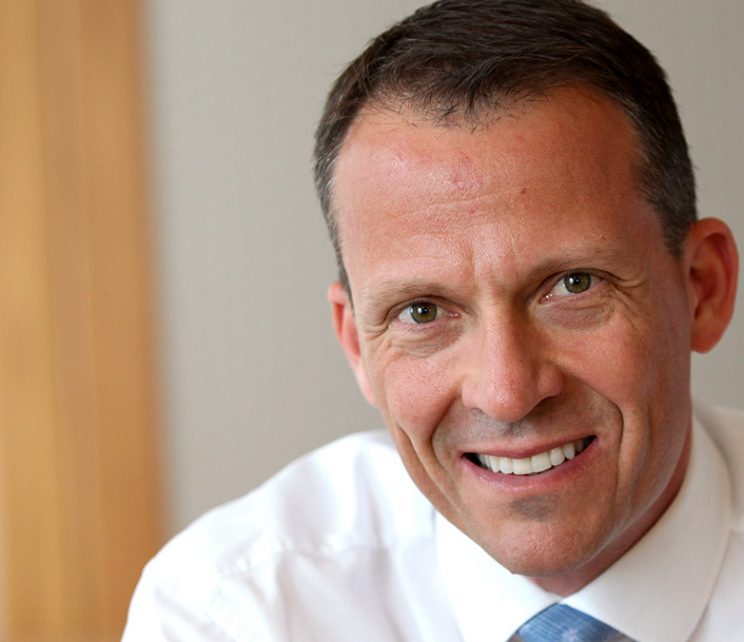
Mainstream Online Web Portal
LoginInvestors can view their accounts online via a secure web portal. After registering, you can access your account balances, periodical statements, tax statements, transaction histories and distribution statements / details.
Advisers will also have access to view their clients’ accounts online via the secure web portal.
The Point
Quick, actionable insights for investors
Australian Equities

Crispin Murray’s weekly ASX outlook
Pendal’s Crispin Murray outlines two possible paths ahead for Australia:
1) The path to a soft landing
- Building inventories mean consumer price rises ease off
- Chinese re-opening eases product supply, also helping inflation
- Wages ease as a lack of stimulus means companies no longer need to pay up to induce workers to return. Companies begin to stop hiring and even lay off workers. Tesla and Amazon’s recent comments are pertinent in this regard
- Commodity prices stop rising
- As a result, the Fed doesn’t need to go harder than what’s already priced in the forward curve
2) The path to recession
- Inflation remains resilient as the economy doesn’t slow sufficiently
- Companies continue to catch up to the cost impost they are wearing
- Housing costs keep rising
- The labour market stays tight as service jobs continue to recover, workers seek compensation for higher prices and so wage growth doesn’t slow
- Supply shortages combined with the return of China continue to underpin higher commodity prices
- This leads to the Fed remaining hawkish, triggering a recession

ESG election: what Labor means for investors
Quick view
ESG election: what Labor means for investors
The shift towards progressive politics and climate action that swept Labor to power has important implications for investors, says Pendal’s Rajinder Singh.
“It was an ESG election,” says Rajinder, who manages Pendal Sustainable Australian Share Fund.
“If you break it down, some of the key policy differences in this election were all about E, S and G.
“On the environmental side, it’s about climate change. For social issues, it was about gender and diversity in workplaces, childcare and Indigenous issues. And a federal integrity commission? That’s governance.”
Some spots to watch: new energy transmission infrastructure, investment in childcare and aged care and how a renewed focus on indigenous affairs affects not only miners but all ASX-listed companies.
“This is now a government with policies that are more aligned with the ESG trends that we’re seeing in the market.”

Crispin Murray’s weekly ASX outlook
Quick view
Crispin Murray’s weekly ASX outlook
Aussie equity investors will have noticed a large sector divergence in the ASX300 this year. Our head of equities Crispin Murray rates the sectors from best-performed to worst:
- Energy: Positive fundamentals, making it the most defensive
- Consumer staples: Supported by predictability and lack of cyclicality
- Financials: Becoming less defensive in the past few weeks, probably as the market has started to focus on the prospect of a domestic economic slowdown
- Property: The break-out in Australian bond yields has turned this sector from defensive to under pressure in recent weeks
- Healthcare: Has lagged due to growth characteristics, but becoming more defensive recently
- Discretionary: Has been under pressure due to cyclical concerns and Covid benefits unwinding
- Tech: Remains the weakest
Right now the issue weighing on markets is not so much the rate hikes — which have been well flagged — but widespread scepticism that central banks can tame inflation without causing recession, says Crispin.

Crispin Murray’s weekly ASX outlook
Quick view
Crispin Murray’s weekly ASX outlook
This is a critical juncture in terms of which way markets break, says our head of equities Crispin Murray.
“Signs of stress are building in markets but we are also seeing weak sentiment and some pockets that look to be oversold.”
Crispin points to three areas of concern:
- The US dollar’s current strength can be a problem for markets since it complicates the ability to contain inflation outside the US. It also leads to potentially significant capital outflows and puts strain on emerging markets. Markets tend to be more volatile when currencies are not stable.
- Credit markets continue to deteriorate as the US high-yield credit default swap index moves higher. It has more room to go as the economy slows.
- The correlation between bonds and equities appear to have reversed. Correlation has been low post-GFC, where bonds offered protection against equity sell-offs. It is now high, making it harder for investors to hedge portfolios. This has an impact on the amount of money investors can deploy in equities – as does recent high levels of volatility.

Crispin Murray’s weekly ASX outlook
Quick view
Crispin Murray’s weekly ASX outlook
Concern about Chinese economic growth remains a major factor influencing equity and bond markets.
Five factors have caused a rapid deterioration in sentiment on China’s outlook, says our head of equities Crispin Murray:
- Lockdowns choking demand and supply chains
- Currency appreciation relative to competitors
- Global slowdown
- Weak consumer confidence
- Property market remaining fragile
It’s estimated that a quarter of China’s population — in 44 cities and accounting for 38% of GDP — are in some form of lockdown.
Chinese growth could slow from 4.8% in Q1 to less than 2% in Q2, he says.
“The policy response so far is regarded as too limited.
“We think the structural story in commodities remains attractive. But there is a sense it is a very long position among investors at the moment.”

Crispin Murray’s weekly ASX outlook
Quick view
Crispin Murray’s weekly ASX outlook
The recent recovery in equity markets looks to be ending as the S&P 500 fell -1.2% and the NASDAQ -3.9% last week.
Australia remains more defensive in this environment, falling just 0.3% for the week. More hawkish comments from the Fed prompted the fall.
It signalled a 50bps hike in rates for May, absent any major new shock. It also reinforced the message that quantitative tightening is on its way. While this was known, it triggered a further sell off in long-dated bonds.
US 10-year Treasury yields rose 32bps for the week. It also took the yield curve back into positive territory.
This reinforces the key message that the Fed needs overall financial conditions to tighten sufficiently to cool wage inflation.
Surging equity markets loosen overall conditions, and the Fed is likely to try and prevent this.

Weekly Australian equities outlook
Australian data suggests ongoing economic strength despite worrying signs in Europe, says Pendal portfolio manager Jim Taylor.
“Policy decision and timing in Europe are complicated by a strong inflationary pulse. This is underpinned by continued capacity constraints, second-order effects of the Ukraine war and China’s Covid response.”
Meanwhile in Australia retail sales are almost back to their pre-Omicron peak in November. Fashion and eating out dominated the February sales data with about 15% growth.
“Statistics indicate housing credit growth continues to accelerate to a post-GFC high, while residential approvals have rebounded strongly from a Covid-induced delay,” says Jim.
“Business credit growth is also strong, running at 10% year-on-year. This is also a post-GFC high. Other data shows household wealth growing as quickly as ever.
“The ratio of job vacancies to unemployed people has also spiked to a record high 75%.
“Normally for every job vacancy there are three-to-four unemployed people available. Now there are only about 1.25.”

Crispin Murray’s weekly ASX outlook
Quick view
Crispin Murray’s weekly ASX outlook
Equity markets continue to bounce despite increasing two-year US bond yields, a surging oil price and higher US dollar.
While our head of equities Crispin Murray remains wary in the near-term, he continues to reiterate that Australia is better placed than many other countries.
“There is less need to raise rates,” says Crispin. “The economy is benefiting from pent-up demand as restrictions roll back.
“Australia is largely self-sufficient in key commodities and is a beneficiary of rising prices here.
“This underpins our relatively positive view of the domestic equity market. This is reinforced by the degree to which the Australian market has underperformed the S&P 500 since the GFC.
“While recent outperformance has been material, it is a blip on a longer-term view. This gives us confidence in the potential for further outperformance.”

Crispin Murray’s weekly ASX outlook
Quick view
Crispin Murray’s weekly ASX outlook
“The environment we are in today is different to the post-GFC era — what worked in the last six years won’t work going forward,” says Pendal’s head of equities Crispin Murray.
“We see corporate cash flow and consistency as critical. We do not expect high growth, speculative and profitless tech to resume market leadership.
“We see Australia as a relative safe haven given the economy is in good shape and skews to commodity and financial stocks.
“The near-term market is likely to remain weak, but we don’t expect stagflation and the start of a bear market.
“Current drawdowns tend to be indiscriminate, thereby creating significant stock opportunities.”

Crispin Murray’s weekly ASX outlook
Quick view
Crispin Murray’s weekly ASX outlook
“The environment we are in today is different to the post-GFC era — what worked in the last six years won’t work going forward,” says Pendal’s head of equities Crispin Murray.
“We see corporate cash flow and consistency as critical. We do not expect high growth, speculative and profitless tech to resume market leadership.
“We see Australia as a relative safe haven given the economy is in good shape and skews to commodity and financial stocks.
“The near-term market is likely to remain weak, but we don’t expect stagflation and the start of a bear market.
“Current drawdowns tend to be indiscriminate, thereby creating significant stock opportunities.”

Crispin Murray: Australia is a good place for investors right now
Quick view
Crispin Murray: Australia is a good place for investors right now
Australia is as good a place as investors can be in this tough environment, says Pendal’s head of equities Crispin Murray.
Four major challenges are hitting markets simultaneously, says Crispin: the crisis triggered by Russia’s invasion of Ukraine, the re-emergence of inflationary pressures, impending interest rate rises and the pandemic.
“It’s not a great short-term message — we think markets are going to continue to struggle,” Crispin said this week in his bi-annual Beyond the Numbers webinar.
“There are however, two silver linings. The first is that Australia is perhaps the most defensive market in the environment we’re in.
“The second is that when you see this sort of drawdown in financial markets, there tends to be an indiscriminate nature to those sell-offs.
“They often lay the foundations for some of the best investment opportunities that we will be able to take advantage of over the next few years.”

Crispin Murray’s weekly ASX outlook
Quick view
Crispin Murray’s weekly ASX outlook
Here are the main factors driving the ASX this week according to our head of equities Crispin Murray. Reported by portfolio specialist Chris Adams.
RUSSIA’S invasion of Ukraine is creating second-order effects which the market is struggling to read, leading to dislocations.
We can see two ends of the spectrum in commodities which are “melting up” and European equities (banks in particular) which are plunging.
The markets are facing a four-way collision: the pandemic, a geopolitical crisis, an interest rate tightening cycle and an inflation shock. This is a unique combination.
Historically a geopolitical crisis such as Ukraine and the resulting supply side shock would be partly managed through a reduction in interest rates — as was the 1998 Russian default.
Loading posts...
Loading posts...














